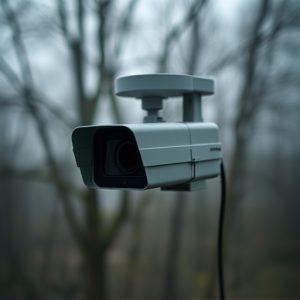Uncover Hidden Cameras: Smartphone Apps for Decoy Detection
Hidden cameras pose severe privacy risks, but advanced security decoys offer protection. These inclu…….
Hidden cameras pose severe privacy risks, but advanced security decoys offer protection. These include realistic fake cameras and motion-activated alarms that expose hidden lenses. Smartphone apps using image recognition and AI detect real cameras and even the most realistic-looking security decoys, aiding professionals in high-risk fields. To maximize effectiveness, choose decoys that mimic real devices with LED indicators and motion sensors, strategically place them in high-risk areas, and keep them charged and updated.
Uncover the invisible threat of hidden cameras with our comprehensive guide. In today’s digital age, privacy is a precious commodity, and protecting yourself from surveillance is essential. Learn how to detect these clandestine devices using your smartphone. We explore the world of hidden camera technology and present effective methods, including the use of advanced apps designed to identify decoy cameras, known for their most realistic looking designs. Discover best practices to ensure your safety and privacy.
- Understanding Hidden Cameras and Their Detection
- Smartphone Apps for Camera Decoy Identification
- Best Practices for Using Security Decoys on Your Phone
Understanding Hidden Cameras and Their Detection
Hidden cameras, often used for surveillance or malicious purposes, have evolved to become increasingly sophisticated and hard to detect. These devices can be as small as a button or integrated discreetly into everyday objects like clocks or plants. They capture video or take photos secretly, raising significant privacy concerns. To counter this, individuals and organizations must employ effective methods to identify these hidden threats.
One of the most common approaches is using security decoys that mimic real cameras but are designed to deter or alert users of potential hidden camera setups. These decoys come in various forms, from realistic-looking fake cameras to motion-activated devices that trigger alarms when triggered by unusual movement, helping to uncover clandestine surveillance equipment. With advancements in technology, modern deceptions offer more than aesthetic appeal; they can detect and even record the presence of hidden lenses, providing a robust defense against peeping toms and privacy invaders.
Smartphone Apps for Camera Decoy Identification
Smartphone apps have emerged as powerful tools in the quest to detect hidden cameras, offering a convenient and accessible solution for individuals seeking to ensure their privacy. These applications utilize advanced technologies like image recognition, heat mapping, and AI algorithms to identify not only real cameras but also the most realistic-looking security decoys. By analyzing visual cues, light patterns, and subtle disturbances in the environment, these apps can help users locate hidden surveillance devices that might be watching them.
The market is filled with various smartphone apps designed for this purpose, each claiming to offer superior performance. The best among them employ sophisticated techniques to differentiate between genuine cameras and deceptive decoys, ensuring users receive accurate results. These apps are particularly useful for professionals in fields where privacy is paramount, such as journalists, activists, and corporate spies, allowing them to navigate with an extra layer of security awareness.
Best Practices for Using Security Decoys on Your Phone
When using security decoys on your phone, it’s crucial to opt for the most realistic-looking options available. These decoys should mimic real phones or other devices in appearance and functionality to effectively deter potential camera operators. Look for products that offer a range of features like LED indicators, motion sensors, and adjustable settings to blend seamlessly with genuine hardware.
To ensure maximum effectiveness, deploy these decoys strategically. Keep them charged and within reach; place them in obvious locations where a hidden camera might be expected, such as near windows or doors. Regularly update the software on your decoys to maintain their authenticity and prevent any potential vulnerabilities from being exploited.
In today’s digital age, understanding and protecting against hidden cameras is paramount. Smartphone apps have emerged as powerful tools, enabling users to detect even the most realistic-looking security decoys. By employing these apps and adhering to best practices, individuals can enhance their privacy and security. Whether for personal or professional use, staying vigilant and equipped with the right knowledge is key to navigating this modern challenge.


